#accelerometer
Explore tagged Tumblr posts
Text

BMI323 IMU breakout ⚙️🔍
We have a project we're working on with a BMI323 (https://www.digikey.com/en/product-highlight/b/bosch-sensortec/bmi323-inertial-measurement-unit) chip. Since this is our first time using the sensor, we decided to make a breakout for it! This chip has fast sample rates and an I2C/I3C/SPI interface. After we explore this chip, maybe we'll do an EYE ON NPI about it!
#bmi323#imu#motiontracking#sensor#electronics#breakoutboard#i2c#spi#i3c#pcbdesign#embedded#hardware#engineering#opensource#tech#robotics#diy#makers#innovation#wearables#automation#accelerometer#gyroscope#bosch#fastsampling#microcontroller#developmentboard#prototyping#electronicprojects#eyeonnpi
15 notes
·
View notes
Text

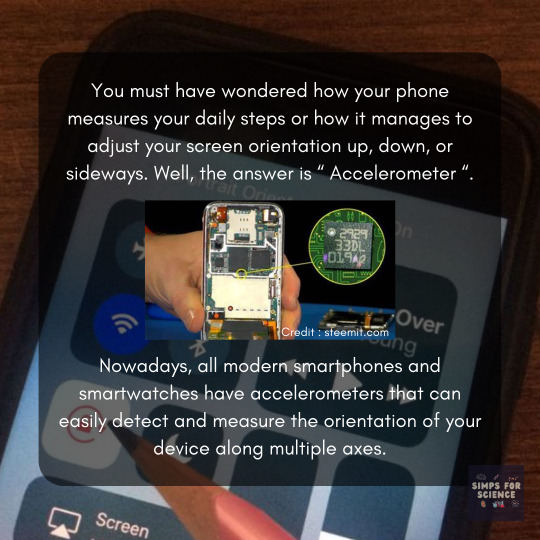
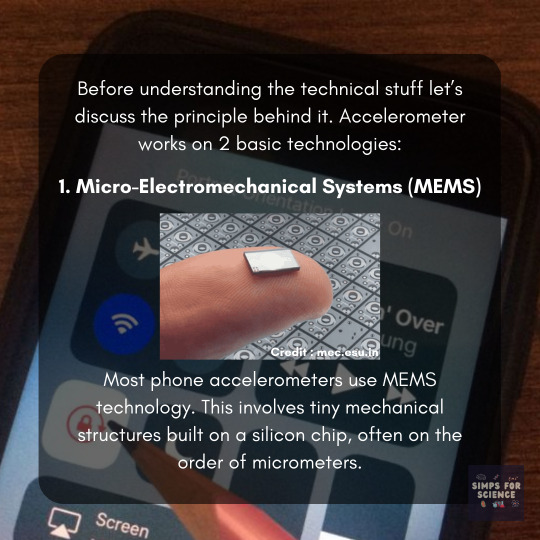
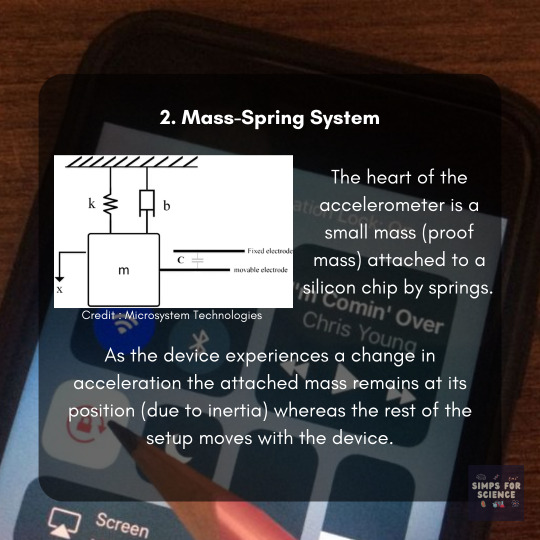
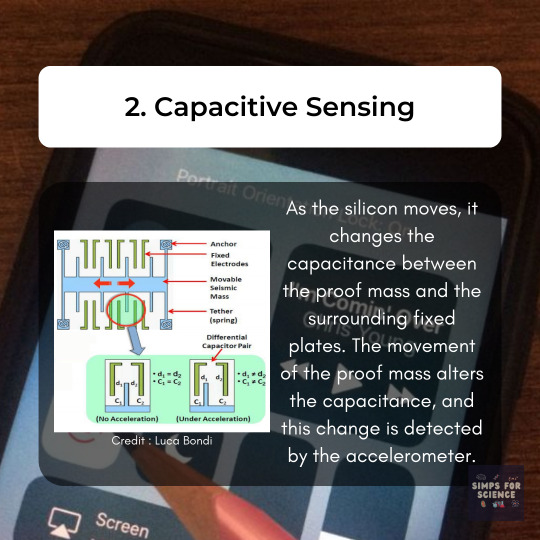
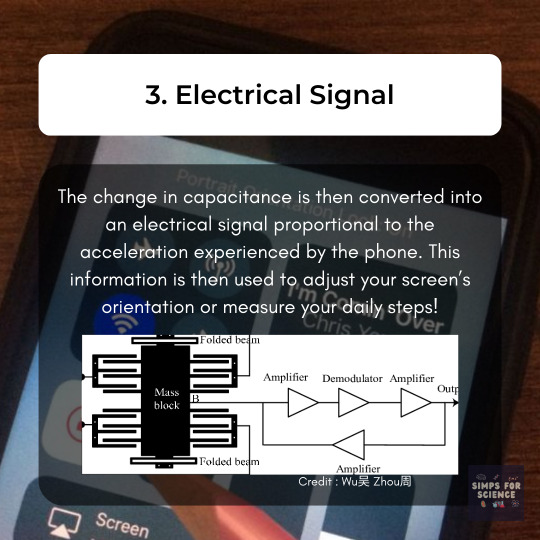

How does your phone 📲 know you turned into a landscape artist?👩🏻🎨 Can you outsmart its rotation sense? We notice this happen several times a day, sometimes wonder🤔 about the how and then let it just slip from the mind within a few seconds. Swipe through this post to unfold 📖the tech behind this magic trick !🪄🎩
#accelerometer#microelectronics#technology#techgeek#tech#phone#engineering#physics#devices#electronics#education#science#science facts#study blog#discover#scicomm#research scientist#explore#smartphone#smartwatch#capacitors#cool science#simps for science
11 notes
·
View notes
Text
Building Custom HomeKit Devices

Have you ever caught yourself thinking, “I wish there was a HomeKit device that could do this…”? Yeah, same here. For me, it was wishing my washer-dryer could send a notification when the laundry’s done. See, it’s out in the yard—so if you’re chilling in the living room with the TV on, you’d never hear the washing machine’s faint beep of completion.
Luckily, I had a few ESP32s and sensors collecting dust in a drawer, so I thought: Why not build one myself? With a little help from AI, of course. I’ve been bouncing between Gemini 2.5 Pro, Grok, and ChatGPT, and they’ve been surprisingly great sidekicks. Sure, I could’ve sat down and studied all the libraries and frameworks properly—it might’ve taken me a couple of days tops (I’ve been around the programming and electronics block a few times). But thanks to AI, I hacked together a working prototype in just a few hours.
Now, this isn’t a tutorial—that’s coming soon once I’ve fine-tuned everything and properly tested my DIY HomeKit setup. This is more of a quick peek behind the curtain. A little show and tell.


For the build, I used an ESP32-S3 WROOM-1 (N16R8) and an MPU6050 3-axis accelerometer. Total cost? Around 7 bucks. Hooking up the sensor via I2C was simple enough. When any of the AIs got confused or hit a wall, I just tag-teamed between them until I got what I needed.
And here’s the result after just a few hours of tinkering—Apple’s Home app picked up my custom HomeKit device without a hitch. The best part? Seeing “ChrisTan Workshop” proudly listed as the manufacturer. Cracked me up. Nothing like a bit of DIY flair baked right into the Home app!




Here’s a quick rundown of how the magic works: the MPU6050 accelerometer monitors for vibrations. If it detects continuous movement for more than 20 seconds, we assume the washing machine is doing its thing and mark it as “running.” Once it stays still for over 3 minutes, we take that as a sign that the laundry’s done. These timings—and a few other parameters—are all configurable. I’m still fine-tuning them to match the quirks of my Electrolux washer dryer.
One of the trickier parts (and where all the AIs struggled a bit) was figuring out how to send a proper HomeKit notification. After some back-and-forth, we found a clever workaround: register the device as a doorbell. That way, when the laundry finishes, my HomePod mini chimes and a notification pops up like someone’s at the door. Not exactly elegant, but hey—it works! I just wish HomeKit gave us more flexibility with custom notifications, but I get it… Apple’s probably trying to prevent spammy alerts from rogue accessories.

That’s it for now. Eventually, I want to make this whole thing easily user-configurable—no coding required. But for the moment, a few parts are still hard-coded under the hood.
0 notes
Text
Accelerometer: Enable New Business Opportunities In Motion Tracking Technology
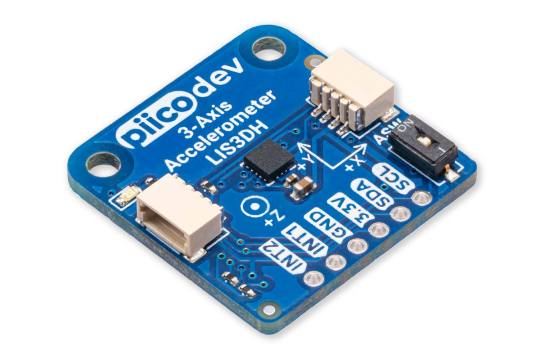
Acceleration sensors are devices that measure acceleration forces. They detect magnitude and direction of the force of acceleration as a vector quantity, including gravitational acceleration, thus allowing to determine changes in motion, orientation, vibration and shock. An acceleration sensor's operating principle is based on deflecting a mechanical structure which is attached to a piezoresistive or capacitive element, where the deflection is converted to a measurable electrical signal.
There are several types of acceleration sensors used in various applications, with their differences in size, specifications and principles of operation. Piezoelectric acceleration sensors measure the charge produced when a piezoelectric material is subjected to acceleration. Capacitive acceleration Accelerometer sensors detect shifts in capacitance in response to acceleration. MEMS (Micro-Electro-Mechanical Systems) acceleration sensors are batch-fabricated and integrated circuits formed using integrated circuit fabrication techniques and use piezoresistive or capacitive sensing. Piezoresistive acceleration sensors rely on the change of resistance in piezoresistive materials like silicon when subject to mechanical stress.
Accelerating Motion Tracking For Business And Accelerometer
The development of small, low-cost and integrated acceleration sensors enabled new motion tracking technologies that are finding numerous applications across different industries. Wearables packed with multiple sensors including acceleration sensors are allowing continuous monitoring of staff activities in areas like manufacturing, construction, warehouses and healthcare. Motion capture technology using acceleration sensors aids in animation, virtual reality, biomechanics research and rehabilitation. Acceleration sensors are helping improve safety gear like hard hats by detecting impacts or falls. Quality control in assembly lines is enhanced through precise motion monitoring. Sports teams gain insights on player performance and injuries from data collected via wearable acceleration sensors. Overall, motion tracking is boosting productivity, efficiency and safety across many verticals.
Opportunities In Consumer Electronics And Iot Devices
Consumer electronics have wholeheartedly embraced acceleration sensors, using them extensively in applications centered around user interactions, navigation, alerts and activity/fitness tracking. Motion detection allows touchless control of devices and apps through hand gestures. Acceleration sensors play a pivotal role in sensors for tilt compensation in cameras, image stabilization in camcorders and anti-shake technologies in smartphones.
Performance monitoring functions in wearables rely on the accuracy of integrated multi-axis acceleration sensors. Advances in nanoscale MEMS technology have led to the inclusion of more sensitive acceleration sensors in small portable gadgets as part of the rise of IoT devices. Miniaturized acceleration sensors coupled with artificial intelligence and cloud services are enabling entirely new use cases across various sectors.
Enabling Automotive Safety Features And Driver Assistance Systems
Passenger safety remains a top priority for automakers and has prompted adopting novel sensor technologies including acceleration sensors. Today's vehicles integrate triaxial acceleration sensors into airbag control modules, anti-lock braking systems, electronic stability control and rollover detection mechanisms. This facilitates instant damage assessment in a crash to optimize deployment of restraints. Advanced driver-assistance systems use acceleration sensors integrated with cameras, radars and LIDARs to recognize lane departures, emergency braking situations, traction control and blind spot monitoring. Future autonomous vehicles will rely extensively on robust motion sensing through dense arrays of high-performance MEMS acceleration sensors for functions like automated braking, collision avoidance and rollover prevention. This will pave the way for mass adoption of self-driving cars.
Prospects For Growth Through New S And Technologies
The acceleration sensor has grown consistently over the past decade driven by large-scale integration into mainstream consumer products and expanding use cases across industries. Further adoption in emerging fields including drones, robotics, AR/VR and digital healthcare is anticipated to spur more demand.
Upcoming technologies leveraging high dynamic range, high shock survivability and low power consumption acceleration sensors could tap new verticals in asset and structural monitoring, emergency response, aerospace instrumentation and smart cities. Commercialization of MEMS gyroscopes and acceleration sensor/gyroscope combos supporting advanced inertial navigation systems present new opportunities. Growth of IoT networks and applications built on predictive analytics of motion data ensure a promising future for acceleration sensor innovations and their ability to revolutionize business models.
Get more insights on this topic: https://www.trendingwebwire.com/accelerometer-the-fundamental-device-behind-motion-detection-in-globally/
About Author:
Ravina Pandya, Content Writer, has a strong foothold in the market research industry. She specializes in writing well-researched articles from different industries, including food and beverages, information and technology, healthcare, chemical and materials, etc. (https://www.linkedin.com/in/ravina-pandya-1a3984191)
*Note: 1. Source: Coherent Market Insights, Public sources, Desk research 2. We have leveraged AI tools to mine information and compile it
0 notes
Text

What is an #Inertial #Measurement #Unit?
More detail: https://www.ericcointernational.com/.../what-is-an...
1. What is #IMU?
An Inertial Measurement Unit (IMU) is a device that can measure and report the specific gravity and angular rate of an object to which it is attached. Imus typically include:
#Gyro: provides angular rate measurement
#Accelerometer: Provides specific force/acceleration measurement
Magnetometer (optional) : Measures the magnetic field around the system
Adding magnetometers and filtering algorithms to determine directional information results in a device called the Attitude and Heading Reference System (#AHRS).
Imus are available in a variety of performance levels. According to the specifications of #accelerometers and #gyroscopes, they are divided into one of four categories:
Consumer/Automotive grade
#Industrial grade
#Tactical level
Marine class
0 notes
Text
MPU-6050: Features, Specifications & Important Applications
The MPU-6050 is a popular Inertial Measurement Unit (IMU) sensor module that combines a gyroscope and an accelerometer. It is commonly used in various electronic projects, particularly in applications that require motion sensing or orientation tracking.
Features of MPU-6050
The MPU-6050 is a popular Inertial Measurement Unit (IMU) that combines a 3-axis gyroscope and a 3-axis accelerometer in a single chip.
Here are the key features of the MPU-6050:
Gyroscope:
3-Axis Gyroscope: Measures angular velocity around the X, Y, and Z axes. Provides data on how fast the sensor is rotating in degrees per second (°/s).
Accelerometer:
3-Axis Accelerometer: Measures acceleration along the X, Y, and Z axes. Provides information about changes in velocity and the orientation of the sensor concerning the Earth's gravity.
Digital Motion Processor (DMP):
Integrated DMP: The MPU-6050 features a Digital Motion Processor that offloads complex motion processing tasks from the host microcontroller, reducing the computational load on the main system.
Communication Interface:
I2C (Inter-Integrated Circuit): The MPU-6050 communicates with a microcontroller using the I2C protocol, making it easy to interface with a variety of microcontrollers.
Temperature Sensor:
Onboard Temperature Sensor: The sensor includes an integrated temperature sensor, providing information about the ambient temperature.
Programmable Gyroscope and Accelerometer Range:
Configurable Sensitivity: Users can adjust the full-scale range of the gyroscope and accelerometer to suit their specific application requirements.
Low Power Consumption:
Low Power Operation: Designed for low power consumption, making it suitable for battery-powered and energy-efficient applications.
Read More: MPU-6050
#mpu6050#MPU-6050#IMU#accelerometer#gyroscope#magnetometer#6-axis IMU#inertial measurement unit#motion tracking#orientation sensing#navigation#robotics#drones#wearable devices#IoT#consumer electronics#industrial automation#automotive#aerospace#defense#MPU-6050 features#MPU-6050 specifications#MPU-6050 applications#MPU-6050 datasheet#MPU-6050 tutorial#MPU-6050 library#MPU-6050 programming#MPU-6050 projects
0 notes
Text
Demystifying the Accelerometer Switch Box Guide for Engineers and Hobbyists
In the realm of engineering and hobbyist ventures, understanding the intricacies of accelerometer switch boxes is paramount. These devices, crucial for accurate measurements of acceleration, find applications in various fields. Today, let's demystify the accelerometer switch box and explore its significance for engineers and hobbyists alike.
At a hub of cutting-edge solutions for the engineering community, the accelerometer switch box stands out as a vital tool. Designed to seamlessly integrate with different systems, this device facilitates the precise measurement of acceleration, enabling engineers to gather critical data for their projects.
Accelerometer switch boxes play a pivotal role in diverse industries, including automotive, aerospace, and robotics. Engineers rely on them to assess the performance of vehicles, spacecraft, and robotic systems by monitoring acceleration changes. This data is instrumental in refining designs, ensuring safety, and enhancing overall functionality.
One of the notable features highlighted at STI's website is the versatility of their accelerometer boxes. These devices are crafted to meet the unique needs of engineers and hobbyists, offering a range of customization options. Whether you're working on a high-stakes aerospace project or a personal robotics endeavour, the accelerometer switch box from STI promises reliability and precision.
In addition to its functional aspects, STI emphasizes user-friendly interfaces and robust build quality. Engineers and hobbyists can seamlessly integrate these devices into their setups, confident in their durability and accuracy.
In conclusion, as engineers and hobbyists delve into projects requiring acceleration measurements, the accelerometer switch box emerges as a critical tool. With STI's commitment to providing high-quality solutions, navigating the complexities of acceleration data becomes an accessible endeavour. Explore the possibilities offered by accelerometer switch boxes and elevate your engineering and hobbyist pursuits with the expertise and reliability offered by STI.
0 notes
Text
3D PRINTING PRECISION WITH THE INPUT SHAPER ADXL345 ACCELEROMETER
When it comes to 3D printing, precision is the name of the game. Imagine having a tool that not only elevates your prints but simplifies the entire process. The ADXL345 Accelerometer by Raven 3D Tech is your answer. In this comprehensive guide, we'll explore the exceptional features and advantages of this innovative product, focusing on its application in 3D printing. Get ready to unlock a new level of precision in your prints with this remarkable 3D printing accessory.
THE ADXL345 ACCELEROMETER: REDEFINING PRECISION IN 3D PRINTING
The ADXL345 Accelerometer, brought to you by Raven 3D Tech, isn't just another 3D printing accessory. It's a game-changing innovation that integrates cutting-edge technology to deliver precision and redefine the 3D printing experience.
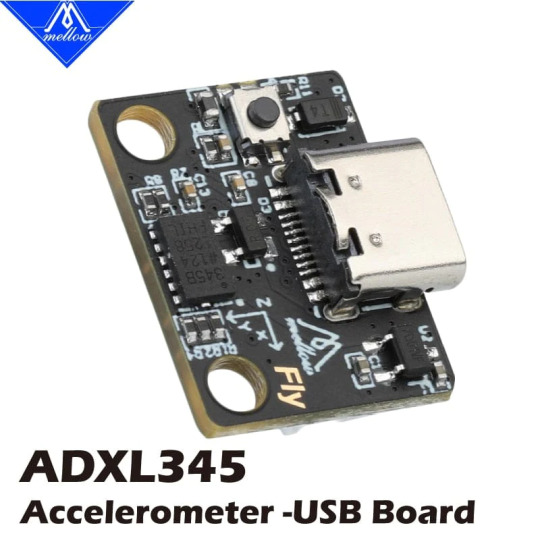
KEY FEATURES
High-Precision Sensing: The ADXL345 is celebrated for its high-precision sensing capabilities, making it the perfect companion for 3D printing. This accelerometer ensures that every layer of your 3D prints is impeccably accurate.
Compact Design: In the world of 3D printing, where space can be a premium, the compact design of the ADXL345 is a boon. It seamlessly integrates into your 3D printer without crowding the workspace.
Triple-Axis Sensing: The ADXL345's triple-axis sensing capabilities open new horizons in 3D printing. It can measure acceleration in three directions - X, Y, and Z, enabling you to fine-tune your prints with unprecedented precision.
ADVANTAGES OVER COMPETING PRODUCTS
What sets the ADXL345 Accelerometer apart from other 3D printing accessories? Let's dive into the distinct advantages.
Robust Build Quality: Raven 3D Tech's commitment to quality is evident in the ADXL345's robust build. This durability ensures that the accelerometer can withstand the demands of 3D printing, offering consistent performance.
Competitive Pricing: Despite its advanced features, the ADXL345 is competitively priced, making it accessible to both professionals and hobbyists who are passionate about 3D printing.
Versatile Applications: The ADXL345's versatility extends to 3D printing and beyond. Whether you're creating intricate figurines, functional parts, or architectural models, this accessory enhances your 3D printing experience.
TECHNICAL SPECIFICATIONS
For a comprehensive understanding of the ADXL345 Accelerometer, let's delve into some essential technical details:
Power Supply Range: The ADXL345 operates within a power supply range of 1.8V to 3.6V, ensuring compatibility with various 3D printers and systems.
User-Friendly Interface: The user-friendly interface simplifies integration for both experienced professionals and those new to 3D printing. Raven3D Tech provides extensive technical documentation and support to ensure you make the most of this accessory.
WHY THE ADXL345 ACCELEROMETER IS YOUR IDEAL 3D PRINTING PARTNER
UNMATCHED PRECISION
The hallmark of the ADXL345 is its precision. Achieve perfection in your 3D prints, whether you're working on detailed prints, complex geometries, or delicate structures. With the ADXL345, precision is the norm.
ENERGY EFFICIENCY
Sustainability is more critical than ever, and the ADXL345 excels as an energy-efficient choice. Its optimized power consumption means your 3D printer can operate for extended periods without frequent recharging or replacements.
COMPREHENSIVE SUPPORT
Raven3D Tech doesn't merely offer a product; they provide an entire ecosystem of support and resources. Whether you're an experienced 3D printing professional or just beginning, you'll find the guidance and assistance you need to excel in your projects.
BUY NOW AND ELEVATE YOUR 3D PRINTING EXPERIENCE
Are you ready to elevate your 3D printing to new heights? You can purchase the ADXL345 Accelerometer from Raven3D Tech today. Don't miss this opportunity to enhance the precision and versatility of your 3D prints.
CONCLUSION
The ADXL345 Accelerometer by Raven3D Tech is a revolutionary accessory for passionate 3D printing enthusiasts. With precision, versatility, and competitive pricing, it's your ideal companion for 3D printing projects. Whether you're a professional or a hobbyist, the ADXL345 enhances your 3D printing experience.
In a world driven by innovation and quality, the ADXL345 Accelerometer redefines precision in 3D printing. Buy now and embark on a journey to perfect your 3D prints.
If you're passionate about 3D printing and have been searching for the perfect accessory, your journey ends here. Take a step closer to perfection - buy now and elevate your 3D printing projects with the ADXL345 Accelerometer by Raven 3D Tech.
1 note
·
View note
Video
youtube
The ingenious micro-mechanisms inside your phone
0 notes
Text
youtube
Bosch Sensortec BMI323 General-Purpose, Low-Power IMU
https://www.futureelectronics.com/resources/featured-products/bosch-sensortec-bmi323-imu. Bosch Sensortec optimizes its IMUs (Inertial Measurement Units) for advanced smartphones, wearables, AR and VR, drones, gaming and robots applications. Designed to provide maximum flexibility to customers. An IMU combines a gyroscope with an accelerometer in one system-in-package (SiP). https://youtu.be/6wc3RpTYinE
#Bosch Sensortec BMI323#General-Purpose IMU#Bosch BMI323#Bosch#Sensortec#BMI323#Bosch Sensortec#gyroscope#accelerometer#motion detection#gesture recognition#activity recognition#optical image stabilization#OIS#Youtube
0 notes
Text
Noise colorFit Ultra Calling Smartwatch
Noise colourFit Ultra 3 Bluetooth Calling Smart Watch with Biggest 1.96" AMOLED Display , Premium Metallic Build , Functional Crown , Gesture Control with Silicon ( Jet Black ) Read more.....
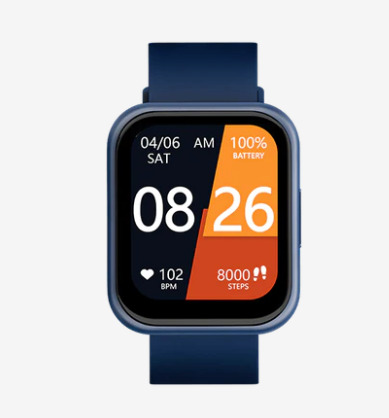
#Best Smart watch#Ultra Calling Smart watch#Metal Material#One Year Warranty Card#Battery backup is standby 30days#Heart rate Sensor#Accelerometer#3 strap materials#Water Resistance#Remote music control#Timer#Alarm#World clock#Screen brightness
0 notes
Photo

12:43 AM EDT April 18, 2025:
Working Men's Club - "Accelerometer Overdose" From the album Mojo Presents Handle With Care: New Music 2022 (January 2022)
Last song scrobbled from iTunes at Last.fm
2 notes
·
View notes
Text

Most acceleration sensors use tiny sensors with movable parts called seismic masses. As the Accelerometer device moves, the seismic masses remain inertially fixed, causing them to be wrenched against the sensor structure. This distortion is detected by the sensor and output as electrical signals that can be amplified, conditioned, and sampled by an analog-to-digital converter for processing by a controller or recorder.
0 notes
Text
i do love it when I get to produce useful results at work by hitting something with a hammer
#in this case it was checking that some accelerometer sensor readings are reasonable#by putting them on the same surface and hitting that surface with a hammer in various ways#scientifical bonking
4 notes
·
View notes
Text
science papers should be written as green text
#litchi.txt#I will repeat this until the day I die#science should be in bullet points#fuck complex sentence structure and Big Proper Words#be me. buy accelerometer type GY. solder solder solder. put in car. measure.
3 notes
·
View notes